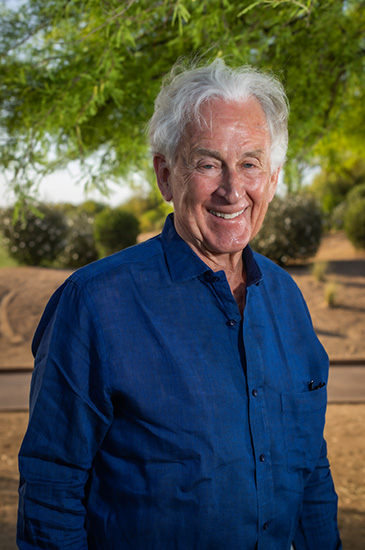Copper City Ranch
Three Forks, MTWell-appointed 7,351± contiguous acre foothills ranch 34 miles from Bozeman. New owner’s residence, 60’x110’ shop with attached residence, three guest cabins, pond, asphalt ranch roads, and horse facilities.
Located an easy 15-minute, mostly paved drive north of Bozeman or from Bozeman’s commercial airport at Belgrade, Cranefield occupies a coveted location in the heart of the greater Springhill community. Its 158± acres are crossed by Reese Creek and a number of spring-fed drainages which have created a series of lush meadows, rich riparian corridors and large aspen groves that combine to create a private idyllic small ranch framed by the Bridger Mountains to the east and with monumental views of multiple mountain ranges to the south and west. Anchored by a nearly new 3,700± square foot Jonathan Foote home and a separated classic farmstead including a wonderful hip-roof barn, a log cabin office and a fully remodeled two-story farmhouse from another period, this is one of the great homesteads of the Gallatin Valley.
The sellers of Cranefield donated a conservation easement to the Gallatin Valley Land Trust in 2004. The easement has been subsequently amended and basically it now allows for some expansion of existing structures and the construction of a guest house of up to 2,500 square feet in either of the current building envelopes. Subdivision of any kind is prohibited as are most commercial uses other than farming and ranching. Copies of the easement document and subsequent amendments are available upon request from any Hall and Hall office.
Cranefield has many elements, but the central element is the owner’s home. It was designed by Livingston architect Jonathan Foote who was the first to incorporate old materials such as hand-hewn logs and stone into his designs. He called this creating structures that have “old souls with young legs.” He pioneered these techniques in the early 1980s and Cranefield is one of his later works built in 2004 after his formal retirement. It is the third house that he designed for the Hanes. He gives credit to Bill Kashishian, the ultimate builder and craftsman who lovingly built Cranefield just before his untimely death. Jon had this to say: “As with so many of the houses which I have designed, the builders are the ones who give them life as they gently handle and cope the century-old timbers, carefully place stone on stone and walk softly on the land as they disrupt the peacefulness of their place of birth. They leave the place, with its new inhabitants, looking as if it has always been there. It is that timelessness of understatement which allows them to shelter the quiet lives who will be their keepers throughout their time together.”
The home is estimated to be around 3,700 square feet and is built of stone and reclaimed hand-hewn timbers. As one drives up the winding gravel driveway one appears to be entering a grove of trees, and then the driveway opens into a sort of courtyard formed by trees and the structures. Directly in front forming the east side is what appears to be a classic hip-roof barn connected by a glass-enclosed breezeway to the main part of the house which forms the south side of the courtyard. The “barn” in fact is a very oversized two-car garage which also includes a lot of storage, a workbench, a dog-washing station and a mud room connected to a good-sized laundry room and wine cellar. The loft is unfinished but is designed to accommodate additional living space. The mudroom leads one to the glass-enclosed breezeway with stone floors that connect to the main house at the east end of the great room.
The great room is a long east-to-west running room with high ceilings, reclaimed wood floors and huge windows all the way along the south side. Doors on this wall lead out to a covered porch and to a stone patio. The east end where one enters includes a powder room and dining room area. The west end of the room includes a fireplace with carved wood mantel, lots of bookcases and a comfortable seating area in front of the fireplace. The kitchen along the north wall is visually separated by a counter and a high cabinet from the rest of the room. It is just the right size for serious cooking and thoughtfully designed with an island stove, lots of cupboards, and all the latest appliances. Adjacent to the kitchen on the north wall is a separate library space with its own fireplace and cozy seating area surrounded by floor-to-ceiling bookcases. We would guess that this comfortable room gets a lot of use – particularly in the winter months. On the west end of the great room one enters into the bedroom area where there are two comfortable guest bedrooms, each with its own bathroom.
Returning to the east end of the great room there is a second glass-enclosed breezeway leading to the master bedroom. These breezeways are wide enough to accommodate seating and the one leading to the master has a seating area for two to enjoy the southerly and westerly views. The master itself includes large east and south facing windows and a well-designed and very large bathroom/dressing room area. There are his-and-her sinks separated by a glass shower. There are two separate, large dressing rooms and a good-sized free-standing tub as well. This area has a lot of windows on the back side of the house, which creates privacy and no need for window coverings. Heating is in-floor for this house and is propane-fired.
Many architect-designed houses tend to be works of art and are often grand and intimidating. A Jonathan Foote designed home has two very essential traits: it is built for humans to live in, and it is thoughtfully sited and designed to take advantage of both the elements and the views. This one is no different.
Jon wrote this on behalf of Cranefield after it was completed:
“I am a quiet place resting among the aspens in the sunrise shadow of Ross Peak with a superb view of the more distant ranges which stand guard beyond the spring green, summer lush and golden fall meadows which surround me. I am home to a family which will live out their rather unique lives in my care and in turn, will care for me as the well-traveled hunter cares for his dog when the hunt is done.
I am a peaceful place in this time of upheaval and change. I am protected from the insults of this time in which we live.... but I don’t miss a whisper of the tumult, as I listen to every word spoken by those who seek shelter within my walls and see the beauty of the place where I live through my all-seeing and keenly focused eyes and ears.
I am happy to be where I am and plan to rest peacefully in this place, in this body and in the slow moving choreography that surrounds me while the string quartet of water, wind, willows and wildlife give rhythm and harmony to my sheltered life.”
The grounds around the house are well landscaped with native trees and plants, and they include a stone water course and waterfall feature that is very pleasing next to the outdoor patio.
About one-quarter mile west of the house is a simple but thoughtfully designed building that includes a fully enclosed area with concrete floor for tack and small machinery storage – lawn mowers, 4-wheelers, etc. There is a central area for hay storage that opens to two covered stalls open to the south. There are a series of corrals and paddocks here for horses.
The original headquarters compound on the northwest corner of the property includes five structures. There is the original farmhouse that has been extensively remodeled. The main floor has been opened up to accommodate a living room, dining area and kitchen in a “great room” configuration. This floor also includes a mudroom/laundry room and a front entrance hall, as well as a small bedroom or office and a half bathroom. The upstairs includes a good-sized master bedroom and a smaller bedroom, each with its own bathroom. The total square footage is around 1,900.
This house is supported by a detached shed/garage. Nearby is a charming one-room log cabin that has been used as an office. It has no plumbing. Further to the east is the original hip-roof barn which is in good condition with a hay mow that has been used for barn dances. A building next to the barn is partially finished on the inside for an intended use as a party facility – a project that was never completed.

Hall and Hall's highest goals were to understand who I was and build a relationship, to understand what made my property special, and to find the buyer.
This letter is written in part to thank Hall & Hall and its associates for their dedication towards serving clients and prospective clients and to purvey to prospective buyers and sellers of properties in the Rocky Mountains West that Hall & Hall’s commitment towards building knowledge of...
